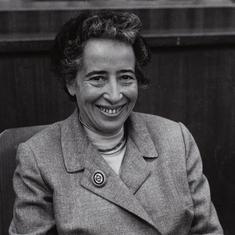Little Durga was hardworking, talented and pretty. She was a curious child with many interests. Her father was a renowned musician. When she was a child, Durga learnt to play musical instruments such as the veena, tabla and sitar. She could sing, dance and paint. Durga belonged to a Marathi Brahmin family which, like most upper-caste families of that time, was very conservative. In her community, girls received little education and were married off early. They were not supposed to have a career. After Durga completed Class 7 in school, her father found a match for her.
The groom was a Marathi Brahmin named Anand Nanoskar. Soon after her marriage, Durgabai realised that Nanoskar was an abusive husband. Their daughter Kamlabai was born in the year 1900. Nanoskar neglected his family and did not do his duty towards Durgabai and Kamla.
Durga was an exceptionally strong and brave woman. She did not want to stay in the marriage. But, regardless of the torture she faced, breaking a marriage was unthinkable for a woman of her social status. Even today, many women are compelled to stay in abusive and unhappy marriages because of the difficulties of living alone. Things were much harder then. How would she raise her daughter? Where would she live? What would she do for a living?
One option for Durga was to work as a domestic help in other people’s houses. Another was to use her talent and skill in singing and dancing to become a theatre actor. Acting in the theatre was not considered a respectable profession in those days, more so for upper-caste women. Durgabai chose to break the taboo. Holding the hand of three-year-old Kamla, she left her home to join a theatre company. Her family members tried to dissuade her. When they could not, they severed all ties with her. The only person who supported her was another strong woman, her mother-in-law. She offered Durga jewellery and a house that she could sell and use the money to start her life afresh as an independent single mother.
It was not easy to find a job at a theatre company. In those days, men played the roles of women. Durga’s talent made them insecure, and some of them even threatened to quit their jobs if Durga was employed alongside them. They feared that women like her would take their jobs away. This hostility did not dampen Durgabai’s spirits. She found a job at a theatre house called Chittakarshak Natak Company. She and Kamla travelled with the company. While she would play the leading female roles, Kamla would act as a child artist. They staged Indian mythological stories and Marathi translations of Shakespeare’s plays. The audience loved the performance of the mother-daughter duo. Kamla could not attend regular school because of the travelling. Durgabai arranged for her to be educated at home. “Home”, however, was not a fixed place for Durga and Kamla. Once they had staged a few shows in one place, the theatre company would move to a neighbouring village. A few days ahead of the move, the manager of the theatre company would rent a large hall, where the team would stay.
Life had many surprises in store for these two amazing women. There was a man called Dhundiraj Govindrao Phalke, popularly known as Dadasaheb Phalke, who had directed India’s first full-length feature film, Raja Harishchandra. He had not been able to find a woman to act as Raja Harishchandra’s wife, Taramati. A man named Anna Salunke had played the role. When Kamla was 13, Phalke approached the manager of Chittakarshak Natak Company for his second film, Mohini Bhasmasura. It was a silent film. He wanted to cast Durgabai in the role of Goddess Parvati and Kamla as Parvati’s daughter, Mohini. The manager agreed and history was made. Durgabai and Kamlabai became the first Indian female actors cast in a film. Even after this, many people considered it improper for women to act in films. Men continued to take on female roles for many years.
Little is known about the rest of Durga’s life. As she grew old, she saw her daughter become a strong woman like her. Kamlabai too acted in theatre and films. She raised her children single-handedly after her husband died at a very young age. With time, Indian cinema emerged as a field where women would make very significant contributions. Sadly, the mother-daughter pair that set the stage for such progress remains largely forgotten.

Excerpted with permission from A Star Named Bibha And Other Stories, Anwesha Sengupta, Simantini Mukhopadhyay, and Supurna Banerjee, HarperCollins India.










